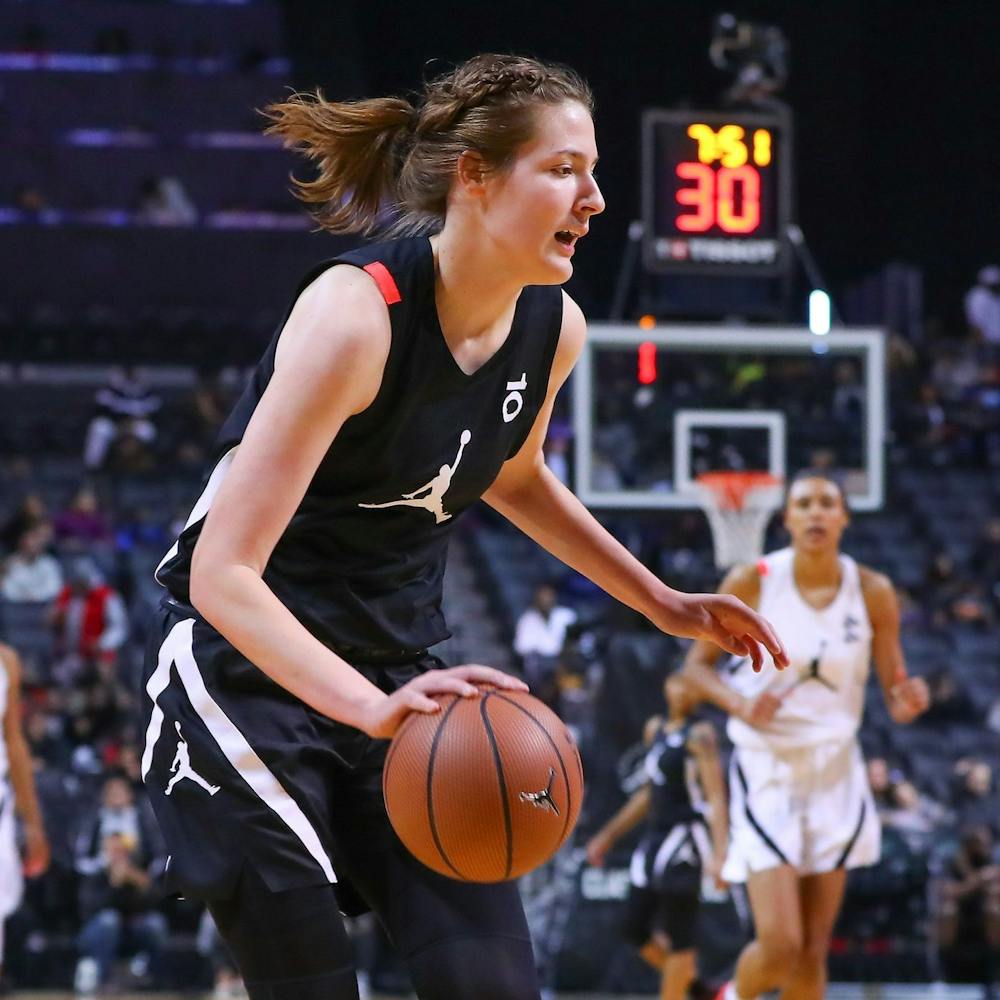The men’s and women’s NCAA Basketball Tournaments both wrapped up recently, but made headlines for more than just basketball.
When Oregon University women’s basketball player, Sedona Prince, posted a viral TikTok of the women’s weight room they would be using in the first two rounds of their national tournament in San Antonio, gender-equality in sports took center stage during the NCAA’s main money-making event.
The caption of the post read, “It’s 2021 and we are still fighting for bits and pieces of equality.”
“I was just very sad when I saw the weight room,” Assistant Professor of Sports Management Amy Stucky said. “I couldn’t believe it happened quite that blatantly. I was surprised —how does this occur?”
The weight room in question had no resemblance to what should be expected for world-class athletes. The facility contained a rack of dumbbells in a convention center, nothing more.
“My first thought was that you could find better weight rooms in a Holiday Inn Express,” Director of Intercollegiate Athletics Kyle Gould said. “I don’t even think it’s as much of a comparison between the men and women, and more that whoever is responsible for the women’s weight room has to do better.”
The NCAA provided the women with an updated weight room after the backlash.
In the days following, more posts and photos emerged. Food, merchandise and COVID-19 tests, among other things, were different for the women’s bubble.
The men participants were receiving daily PCR tests, while the women were receiving daily antigen tests. According to the Food and Drug Administration, antigen tests have faster results, but “have a higher chance of missing an active infection.”
These examples were reminders that while the NCAA and other athletic administrations call for equal opportunity, too often they can still come up short.
But what is equal opportunity? Does it entail equal access or equal rewards? Or both? It’s a difficult question that those within sports are having to wrestle with.
“There should be equal opportunity,” Assistant Athletics Director Natalie Young said. “In the weight room situation that wasn’t equal opportunity, because they didn’t have the same ability to work out. But, I think there’s a difference between that and having equitable benefits. That’s a more difficult question.”
The world of sports will never have flat representation. Division I teams will have more influence within athletics than Division II teams. Typically, a men’s basketball tournament will have more influence than a women’s basketball tournament. In the U.S. economic system, there’s more opportunity in certain sports than there are in others.
No one is sitting in the NCAA headquarters ordering that the women’s tournament be poorly organized to prove a point. It can be easy in today’s world of social media and hot takes to assume this, but it is both inaccurate and illogical. Those organizing the women’s bubble weren’t the same as those who organized the men’s.
An oversight like this doesn’t benefit the NCAA in any capacity.
The problem lies in the fact that the oversights of this nature tend to occur within the world of women’s sports more often. Historically, these mistakes are more acceptable when they have affected women’s sports.
“We can get into all kinds of arguments about how male and female teams are treated and how that impacts money,” Stucky said. “But that should never stop us from doing what is right and creating opportunities. When you say that you want to provide opportunities for student-athletes and then pull something like the weight room or COVID test examples, it’s counterintuitive.”
Thankfully, the influence and opportunity for women within sports have grown. Title IX requires equality in participation, scholarship and other factors for men’s and women’s sports teams at colleges and universities.
Taylor abides by The Equity in Athletics Disclosure Act, which requires universities to provide gender-equity information in regards to their athletic department available to the public. Safeguards to ensure that athletic departments are being inclusive have been put in place.
However, that doesn’t mean these oversights can’t continue to happen. The NCAA’s website reads that Title IX requires the “equal treatment of female and male student-athletes in the provisions of (a) equipment and supplies.”
There are other categories that are listed, but the first one listed was clearly violated in the weight room. Other categories in the section include equal health and food services. Neither was equal in the case of this year’s basketball tournaments — there’s still work to be done.
The NCAA followed with a statement owning their mistakes and corrected this individual issue, but accountability needs to be in place in the future.
“It can’t just be, ‘we’ll fix this particular incident,’” Young said. “With equality, it takes time and takes mending of any broken relationships.”



